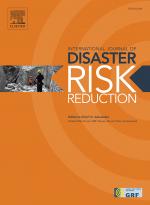Citation:

Abstract:
A methodology to create synthetic earthquake-induced building damage states for urban areas in Japan under specific earthquake events is presented in this paper. The methodology is based on empirical fragility curves for Japanese buildings, the building database of the study area and the strong motion magnitude spatial distribution. A stochastic approach was then used to allocate damage states to buildings. The synthetic building damage scenario is intended to be used as a platform for performing computational simulations of evacuation and relief distribution under multiple damage scenarios. The methodology is applied to an area within Mashiki town, Kumamoto Prefecture, which was affected by the Mw 7.0 2016 Kumamoto earthquake. The comparison of the synthetic buildings damage scenario with the surveyed data inventory shows good agreement in terms of the aggregate statistics.

